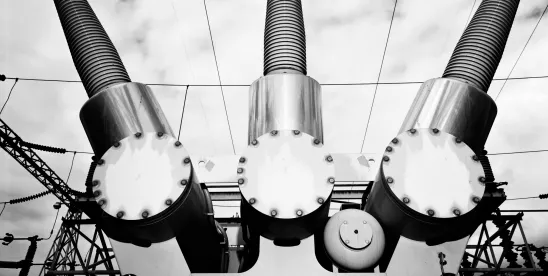On April 19, 2013, EPA released the proposed “Effluent Limitations Guidelines and Standards for the Steam Electric Power Generating Point Source Category” (Steam Electric ELG). The proposed Steam Electric ELG would revise the existing technology-based effluent limitations guidelines [40 CFR 423] for most steam electric power plants and their discharges to U.S. waters or POTWs. This proposed ELG could impact electric power generating facilities fueled by fossil fuels or nuclear sources [NAICS Codes 22111, 221112, 221113]. EPA’s proposed options include exclusions for smaller generators (i.e., 50-megawatt).
Overview
For new sources, EPA has proposed one option in this proposed rule and for existing sources EPA has developed four different regulatory options. Any new requirements for existing sources would apply “on a date determined by the permitting authority that is as soon as possible when the next permit is issued beginning July 1, 2017.” EPA expects the new limitations will apply to all steam electric generating facilities no later than July 1, 2022.
This proposed rulemaking specifically provides new or revised minimum permitting standards for discharges associated with the following processes and byproducts:
-
Flue gas desulfurization
-
Fly ash
-
Bottom ash
-
Flue gas mercury control
-
Combustion residual leachate from landfills and surface impoundments
-
Nonchemical metal cleaning wastes
-
Gasification of fuels like coal and petroleum coke.
Requirements for Coal Combustion Residuals
EPA is also proposing best management practices (BMPs) for surface impoundments storing coal combustion residuals (CCR), incentives for plants to elimination all process wastewater, and incentives to close surface impoundments. EPA intends to coordinate its proposed RCRA rule regulating CCR disposal with the Steam Electric ELG. EPA stated in the Steam Electric ELG preamble that the complementary CCR regulations in the ELG “could provide strong support for a conclusion that regulation of CCR disposal under RCRA Subtitle D would be adequate.” As it relates to the management of CCR, on April 11, 2013, Barnes & Thornburg partner, Susan Bodine, testified before the Economy and Environment Subcommittee of the House Energy and Commerce Committee on draft legislation to authorize a state-lead coal ash disposal permitting program. The transcript of Bodine’s testimony can be found here.
Four BAT Alternatives for Existing Sources
EPA has identified the following four Best Available Technology (BAT) alternatives as its preferred alternatives for existing sources (for sources that are not oil-fired units or smaller than 50 megawatts (MW)) with surface water discharges:
Alternative 1 (Option 3a in the Steam Electric ELG):
a. For fly ash transport water and wastewater from flue gas mercury control system discharges - zero discharge effluent limit.
b. For gasification process discharges – numeric effluent limits for mercury, arsenic, selenium, and total dissolved solids.
c. For nonchemical metal cleaning waste discharges – numeric effluent limits for cooper and iron.
d. For bottom ash transport water and CCR residual leachate from landfills/surface impoundments – numeric effluent limits for total suspended solids, oil and grease that are equal to the current BPT effluent limits for these discharges.
e. Flue gas desulfurization (FGD) wastewater – determine on a site-specific basis.
Alternative 2 (Option 3b in the Steam Electric ELG): In addition to the non-FGD wastewater requirements stated in Alternative 1 above, Alternative 2 would also include:
-
FGD wastewater for plants with a total wet scrubbed capacity of 2,000 MW or greater – numeric effluent limits for mercury, arsenic, selenium, and nitrate-nitrite.
Alternative 3 (Option 3 in the Steam Electric ELG): In addition to the non-FGD wastewater requirements stated in Alternative 1 above, Alternative 3 would also include:
-
FGD wastewater (exception for plants that are 50 MW or smaller or oil fired) – numeric effluent limits for mercury, arsenic, selenium, and nitrate-nitrite.
Alternative 4 (Option 4a in the Steam Electric ELG): In addition to the requirements stated in Alternative 3 above, Alternative 4 also would include:
-
Bottom ash transport water from units that are greater than 400 MW – zero discharge for all pollutants.
Submitting Comments – 60 Day Public Comment Period
The Steam Electric ELG has not yet been published in the Federal Register, but will include a 60-day comment period starting on the date of publication. By consent decree, EPA must take final action on the Steam Electric ELG by May 22, 2014. Due to this tight deadline to respond to comments and craft the final regulation, EPA has indicated that it is reluctant to extend the 60-day comment period. The pre-publication version of the rule can be found here.
Hearing on the Steam Electric ELG’s Proposed Pretreatment Standards – July 9, 2013
EPA has scheduled a public hearing on the proposed pretreatment standards contained in the Steam Electric ELG for July 9, 2013 at 1:00 p.m. ET in the EPA East Building, Room 1153, 1201 Constitution Avenue, N.W., Washington, D.C. EPA’s rulemaking docket and underlying justification for its proposal can be found at www.regulations.gov, docket number EPA-HQ-OW-2009-0819.




 />i
/>i
